ECO-Vrindaban Board Meeting Minutes 10/21/2018
ECO-Vrindaban Board Meeting Minutes 10/21/2018
Mission Statement: ECO-Vrindaban promotes cow protection, local agriculture, and above all, loving Krishna, as envisioned by Srila Prabhupada, ISKCON New Vrindaban’s Founder-Acharya.
Participating Directors: Chaitanya Mangala (chair), Jamuna Jivani (board secretary), Makara, Ranaka, and Vraja.
ECO-Vrindaban Board and Staff Meeting Minutes 10/14/2018
ECO-Vrindaban Board and Staff Meeting Minutes 10/14/2018
Mission Statement: ECO-Vrindaban promotes cow protection, local agriculture, and above all, loving Krishna, as envisioned by Srila Prabhupada, ISKCON New Vrindaban’s Founder-Acharya.
Participating Directors: Chaitanya Mangala (chair), Jamuna Jivani (board secretary), Makara, Olivia, Ranaka, and Vraja.
Participating Staff: Caitanya Bhagavat, Lalita Gopi, Monique, Suchandra, and Vidya.
NEW VRINDABAN DAYS – CHAPTER 8
NEW VRINDABAN DAYS
As New Vrindaban enters its 50th anniversary (1968 to 2018), I wrote this series of articles for the Brijabasi Spirit in an attempt to give the reader not only an “understanding,” but more importantly a “taste,” of what life in early New Vrindaban was like – through the stories of one devotee’s personal journey.
The title of the series, “New Vrindaban Days,” is in tribute to the wonderful book “Vrindaban Days: Memories of an Indian Holy Town” written by Howard Wheeler, Hayagriva Dasa. He was one of Srila Prabhupada’s first disciples, a co-founder of New Vrindaban, and, a great writer. As with Hayagriva’s book, this series focuses on a period of time in the 1970’s.
I would also like to acknowledge and thank Chaitanya Mangala Dasa, for spending untold hours assisting me in refining my writing for your reading pleasure.
I have been asked to describe certain aspects of early New Vrindaban Community life such as the nature of the austerities, what it was like for a new person coming here, cooking, anecdotes about particular devotees, etc.
I attempt to tell these stories in some semblance of a chronological order, beginning with my first meeting with devotees in 1968, leading to my arrival in New Vrindaban in late 1973 and carrying through to the official opening of Srila Prabhupada’s Palace in 1979.
Advaitacharya Dasa
CHAPTER EIGHT: PROPAGANDA
ECO-Vrindaban Board Meeting Minutes 09/23/2018
ECO-Vrindaban Board Meeting Minutes 09/23/2018
Mission Statement: ECO-Vrindaban promotes cow protection, local agriculture, and above all, loving Krishna, as envisioned by Srila Prabhupada, ISKCON New Vrindaban’s Founder-Acharya.
Participating Directors: Anuttama, Chaitanya Mangala (chair), Jamuna Jivani (board secretary), Makara, Olivia, Ranaka, and Vraja.
Participating Advisors: Kripamaya.
New Vrindaban – The Land of Krishna
By Madhava Smullen for ISKCON New Vrindaban Communications
Archival Research by Chaitanya Mangala Dasa
In the early 1960s, A.C. Bhaktivedanta Swami Prabhupada, the founder of the Hare Krishna Movement, was a simple Swami living in the village of Vrindavan, in Uttar Pradesh, India.
Vrindavan, the land where five thousand years ago Lord Krishna grew up tending cows, is one of the most revered places in India and is central to practitioners of Gaudiya Vaishnavism.
Prabhupada’s life there was peaceful – retired from family life, he stayed in a spartan room in the Radha Damodar temple, translating ancient Vedic texts. He could have remained there, living a stress-free existence.
But his mind was set on the instruction his guru, Srila Bhaktisiddhanta Sarasvati, had given him back in 1922: to bring the teachings of bhakti-yoga, or Krishna consciousness, to the English-speaking world.
So Prabhupada left Vrindavan to bring Vrindavan to the world. In 1965, at the age of sixty-nine, he begged a free passage aboard a cargo ship, Jaladuta, to New York. Suffering stormy seas and two heart attacks during his 37-day journey, he arrived at Brooklyn pier with just seven dollars in Indian rupees and a crate of his translations.
After much struggle alone, his message of peace and goodwill began to resonate with the young people of America at the time, and they came forward to become serious students of the Krishna Bhakti tradition.
In July 1966, Prabhupada established the International Society for Krishna Consciousness (ISKCON) for the purpose of “checking the imbalance of values in the world and working for real unity and peace.” ISKCON centers rose up first in New York, and then in San Francisco, Los Angeles, Boston and Montreal.
But as well as city temples, Srila Prabhupada wanted to establish a rural community where people would live a simple life based on the teachings of the Bhagavad-gita, just like the residents of Vrindavan.
He had written about this vision while printing Back to Godhead magazine alone in India in 1956. He had also included it in one of his seven stated purposes for ISKCON: “To bring the members closer together for the purpose of teaching a simpler, more natural way of life.”
Starting in October 1967, Prabhupada began to encourage his early American disciple Hayagriva Das to purchase land for such a community in Wilkes-Barre, Pennyslvania:
“Krishna has given you a very nice chance in the city of Wilkes-Barre Penn… I think you can negotiate for this land immediately,” he wrote. “After purchasing the land you can gradually develop it into an ashram by dint of your personal labor as teacher in college. From N.Y. the members may visit the place every weekend.”
In January 1968, he suggested: “The Ashram may be named as “ISKCON-Nagari or New Vrindaban.”
The Wilkes-Barre property never manifested. But in March of that year, Hayagriva and another disciple, Kirtanananda Swami, reported they were negotiating to lease a large piece of land in West Virginia.
Srila Prabhupada saw an opportunity for his vision to be realized: “I wish that this tract of land be turned into New Vrindaban. You have New York, New England, and so many ‘New’ duplicates of European countries in the USA; why not import New Vrindaban in your country?”
From then on, Prabhupada issued a string of enthusiastic letters describing exactly what he wanted the community to be. He stated that residents should take Lord Krishna’s example and make cow protection “the main business of New Vrindaban.” He wanted a “self-governing village” that would set an example for the entire world in simple living, growing its own produce and making its own butter, yogurt and cheese.
He imagined “a new place of pilgrimage for Western devotees” with replicas of the seven main temples of Vrindavan, and institutions of spiritual education for both adults and children.
Above all, he wanted the simple life of New Vrindaban – just like that of the original Vrindavan – to create an ideal environment for its residents to love Krishna, or God, with all their hearts.
Prabhupada hoped that the beauty and simplicity of New Vrindaban would attract neighbors and build good relationships with them. And he thought he might retire there himself to work on his literary legacy: “If this piece of land is turned into New Vrindaban, I shall forget to return to Indian Vrindavan,” he said.
Prabhupada visited New Vrindaban four times, but never did get to retire there. Instead, over the next several years, he circled the globe 14 times, establishing ISKCON worldwide.
Today, New Vrindaban is part of an international spiritual movement that includes 650 temples, 110 vegetarian restaurants, and 65 farms and eco-villages. 9 million worshippers visit ISKCON temples every year, and over 3 billion free vegetarian meals have been distributed to the general public and the needy.
While all this was happening, New Vrindaban devotees continued to pursue Srila Prabhupada’s vision for their community. Over five decades, they encountered many struggles and, at times, took a few sharp detours.
But they also achieved much that Srila Prabhupada was proud of, too.
“You are fulfilling my dream, New Vrindaban,” he told them in October 1977. “I dreamt all these things. Wonderful things have been done.”
Today, Srila Prabhupada lives on in his instructions, and his presence is still strongly felt in the Palace of Gold, his Smriti Samadhi (memorial shrine), which New Vrindaban residents lovingly built in his honor.
And some of his sincere followers continue to make a concerted effort to realize his grand vision for New Vrindaban – the Land of Krishna.
NEW VRINDABAN DAYS – CHAPTER 7
NEW VRINDABAN DAYS
As New Vrindaban enters its 50th anniversary (1968 to 2018), I wrote this series of articles for the Brijabasi Spirit in an attempt to give the reader not only an “understanding,” but more importantly a “taste,” of what life in early New Vrindaban was like – through the stories of one devotee’s personal journey.
The title of the series, “New Vrindaban Days,” is in tribute to the wonderful book “Vrindaban Days: Memories of an Indian Holy Town” written by Howard Wheeler, Hayagriva Dasa. He was one of Srila Prabhupada’s first disciples, a co-founder of New Vrindaban, and, a great writer. As with Hayagriva’s book, this series focuses on a period of time in the 1970’s.
I would also like to acknowledge and thank Chaitanya Mangala Dasa, for spending untold hours assisting me in refining my writing for your reading pleasure.
I have been asked to describe certain aspects of early New Vrindaban Community life such as the nature of the austerities, what it was like for a new person coming here, cooking, anecdotes about particular devotees, etc.
I attempt to tell these stories in some semblance of a chronological order, beginning with my first meeting with devotees in 1968, leading to my arrival in New Vrindaban in late 1973 and carrying through to the official opening of Srila Prabhupada’s Palace in 1979.
This article describes my experience of what day to day meals were like during the first year I lived in New Vrindaban.
Advaitacharya Dasa
CHAPTER SEVEN: PRASADAM
ECO-Vrindaban Board Meeting Minutes 08/12/2018
ECO-Vrindaban Board Meeting Minutes 08/12/2018
Mission Statement: ECO-Vrindaban promotes cow protection, local agriculture, and above all, loving Krishna, as envisioned by Srila Prabhupada, ISKCON New Vrindaban’s Founder-Acharya.
Participating Directors: Anuttama, Chaitanya Mangala (chair), Jamuna Jivani (board secretary), Makara, Olivia, Ranaka, and Vraja.
Participating Advisors: Bhima and Kripamaya.
NEW VRINDABAN DAYS – CHAPTER 6
NEW VRINDABAN DAYS
As New Vrindaban enters its 50th anniversary (1968 to 2018), I wrote this series of articles for the Brijabasi Spirit in an attempt to give the reader not only an “understanding,” but more importantly a “taste,” of what life in early New Vrindaban was like – through the stories of one devotee’s personal journey.
The title of the series, “New Vrindaban Days,” is in tribute to the wonderful book “Vrindaban Days: Memories of an Indian Holy Town” written by Howard Wheeler, Hayagriva Das. He was one of Srila Prabhupada’s first disciples, a co-founder of New Vrindaban, and, a great writer. As with Hayagriva’s book, this series focuses on a period of time in the 1970’s.
I would also like to acknowledge and thank Chaitanya Mangala Dasa, for spending untold hours assisting me in refining my writing for your reading pleasure.
I have been asked to describe certain aspects of early New Vrindaban Community life such as the nature of the austerities, what it was like for a new person coming here, cooking, anecdotes about particular devotees, etc.
I attempt to tell these stories in some semblance of a chronological order, beginning with my first meeting with devotees in 1968, leading to my arrival in New Vrindaban in late 1973 and carrying through to the official opening of Srila Prabhupada’s Palace in 1979.
This article describes my day to day service activities after only a couple of weeks of living in New Vrindaban.
Advaitacharya Dasa
CHAPTER SIX: IN THE WOODS
Srila Prabhupada’s New Vrindaban Visits
Srila Prabhupada’s New Vrindaban Visits
Written By Madhava Smullen for ISKCON New Vrindaban Communications
Archival Research by Chaitanya Mangala Dasa
ISKCON Founder-Acharya Srila Prabhupada visited New Vrindaban four times, giving the devotees there his association and dispensing practical advice for simple living that remains invaluable not only to New Vrindaban, but to all ISKCON rural farm communities to this day.
ECO-Vrindaban Board Meeting Minutes 07/08/2018
ECO-Vrindaban Board Meeting Minutes 07/08/2018
Mission Statement: ECO-Vrindaban promotes cow protection, local agriculture, and above all, loving Krishna, as envisioned by Srila Prabhupada, ISKCON New Vrindaban’s Founder-Acharya.
Participating Directors: Anuttama, Chaitanya Mangala (chair), Jamuna Jivani (board secretary), Olivia, Ranaka, and Vraja.
Participating Advisors: Jaya Krsna, Kalakantha, and Kripamaya.
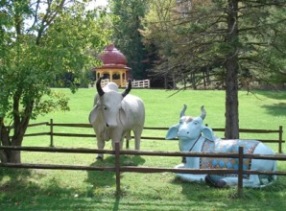
Welcome to Brijabasi Spirit
Thank you for taking the time to visit the New Vrindaban community blog. Think of visiting our blog as making a virtual pilgrimage.
Hare Krishna Hare KrishnaKrishna Krishna Hare Hare
Hare Rama Hare Rama
Rama Rama Hare Hare
"May cows stay in front of me; may cows stay behind me; may cows stay on both sides of me. May I always reside in the midst of cows."
Hari Bhakti-vilas 16.252
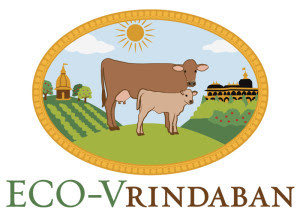
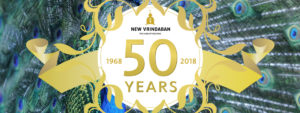
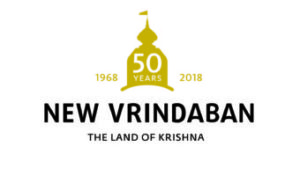
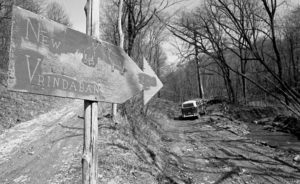




Recent Comments